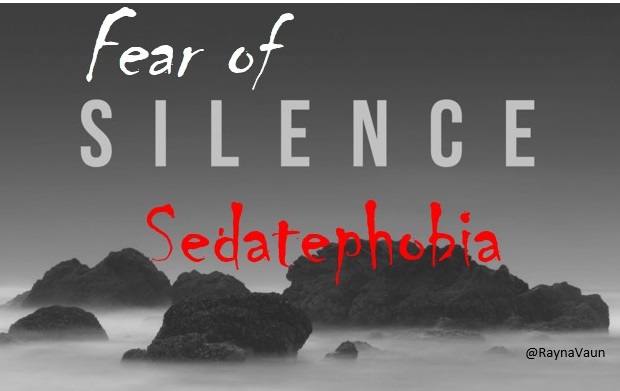“Silence”, it is said, ‘speaks a thousand words’. But to some people, silence can be downright scary. There is a term for this phobia: Sedatephobia. People suffering from Sedatephobia cannot withstand silence; they constantly need noise and human interaction.
The word originates from Greek ‘Sedate’ meaning ‘silent or sleeping or dead’ and Phobos meaning the Greek God of fear, or dread or aversion.
Sedatephobia was relatively unheard of 50 years ago. However, today, it is a fairly common phobia. Expert hypnotists and psychotherapists are seeing large numbers of Sedatephobic individuals in their offices and they believe that these numbers will continue to rise in the coming decades.
For Sedatephobic individuals, darkness might not be scary, but the silence and lack of noise can bring on a full blown panic attack. This constant neediness can be very harmful to the individual.
Symptoms of fear of silence
Excessive noise can be debilitating and can bring on headaches. However, it is silence that can cause various symptoms in a Sedatephobe. Power cuts can be especially trying to such people, since they are left without technology, noise, music or movies around to comfort them.
When left in silence, the phobic might have a full blown panic attack which may be characterized by following symptoms:
- Shivering, shaking, trembling
- Having dry mouth and sweaty palms
- Inability to speak or express themselves: feeling detached from reality and having thoughts of death or dying
- Feeling numb, feeling like crying or fleeing
- Experiencing rapid heartbeat, nausea, gastrointestinal distress etc
Sometimes, a person with Sedatephobia can also feel afraid in a group when people stop talking or there is a lull in the conversation.
Exam times can be especially hard for these individuals. Spending time in a library or even trying to sleep alone can be a scary time for the sufferers of fear of silence phobia.

Causes of Sedatephobia
Like all other specific phobias, the fear of silence is usually caused by a traumatic or negative episode in the phobic’s life. Some phobics, for example might have been locked up or abused by an adult,(some having been kept in basements or closets for punishment where no outside sound reaches them).
The feelings the child has experienced then can get permanently etched on his/her mind. News of a loved one’s death or other traumatic/negative episode associated with silence can also bring on this phobia.
Many experts believe that technology has also given rise to the constant need for sounds around humans.
For some people, it is impossible to meditate or sit in a quiet room for even a few minutes as they always need their phone, music, TV, or the noise of traffic around them.
To be left in silence can mean being “hunted down by supernatural beings or things that go bump into the night”. It also brings the fear of the unknown.
Most sufferers of Sedatephobia also tend to have inherent anxieties. They may inherently have monophobia (the fear of being left alone). The fear of ghosts is also associated with this phobia.
Other causes of the fear of silence phobia include adrenal insufficiencies, depression, hormonal imbalances, and delusional paranoia.
Treating and overcoming the phobia
Family members can play an important role in helping an individual overcome his/her fear of silence.
Talking about the fear to a loved one (or in group therapy) can provide relief to some extent. Else it is best to seek professional help from a professional Therapist or Psychiatrist.
Today, many modern therapies like CBT (or cognitive behavior therapy), NLP or neurolinguistics programming and systematic desensitization therapies are known to help reduce anxiety experienced by Sedatephobia.
All these treatments can help one get to the root of the fear of silence phobia and help the sufferer overcome it once and for all.
Source and original article by: Jacob Olesen. https://www.fearof.net/fear-of-silence-phobia-sedatephobia/

